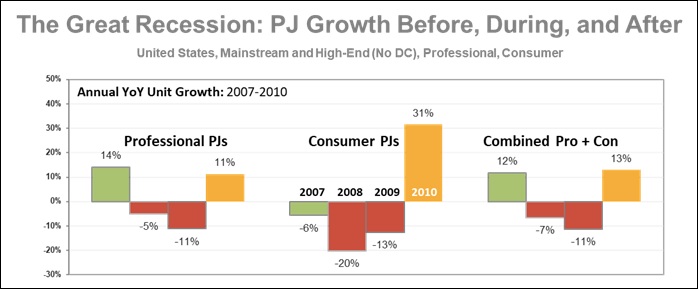PMA Research (PMA) recently released a Special Report on the effects of the novel coronavirus (COVID-19) health crisis on the display market, with comparisons to the 2008-2009 global financial crisis and indications of what the display market’s recovery from the pandemic might look like. There are some similarities between the 2008-2009 situation and the economic impact due to COVID-19, but the differences are significant and mark this crisis as more serious.
The professional display market, which was almost exclusively projectors in 2008, suffered double-digit declines in 2008 and 2009. Recovery, particularly in the US, depended on huge government stimulus packages directed at the K-12 education market. Consumer spending took even longer to recover, as unemployment rates remained high for several years.
In 2008, professional flatpanel displays accounted for less than five percent of total flatpanel-display shipments. Consumer televisions and desktop monitors dominated this market. Recovery from the COVID-19 lockdown will look very different for the professional flatpanel-display business, and it will more likely mirror the projector trends from 2008 to 2010.
Although there are some expected issues with supply, soft demand will be the greater problem. LCD panel prices have been in negative-margin territory for several months, with no room to lower LCD prices to drive more demand. (Cheaper projector prices could be appealing, though.)
The tailwinds that helped fuel a quicker recovery in the LCD market in 2009 are no longer relevant today. At that time, consumer demand for upgrading televisions was high due to technology advancements such as flatscreens, high definition and digital broadcasting. Without the benefit of those tailwinds, a slower recovery could result.
Some areas within the LCD market are showing strong demand. Desktop-monitor sales have grown dramatically as companies equip employees to work from home and as people seek entertainment (gaming/streaming) while they stay at home. Another bright spot is distance collaboration, which has grown exponentially during this shutdown. The ease and effectiveness of videoconference-based brainstorming could propel more in-office solutions.
For more news from Sound & Communications, click here.
